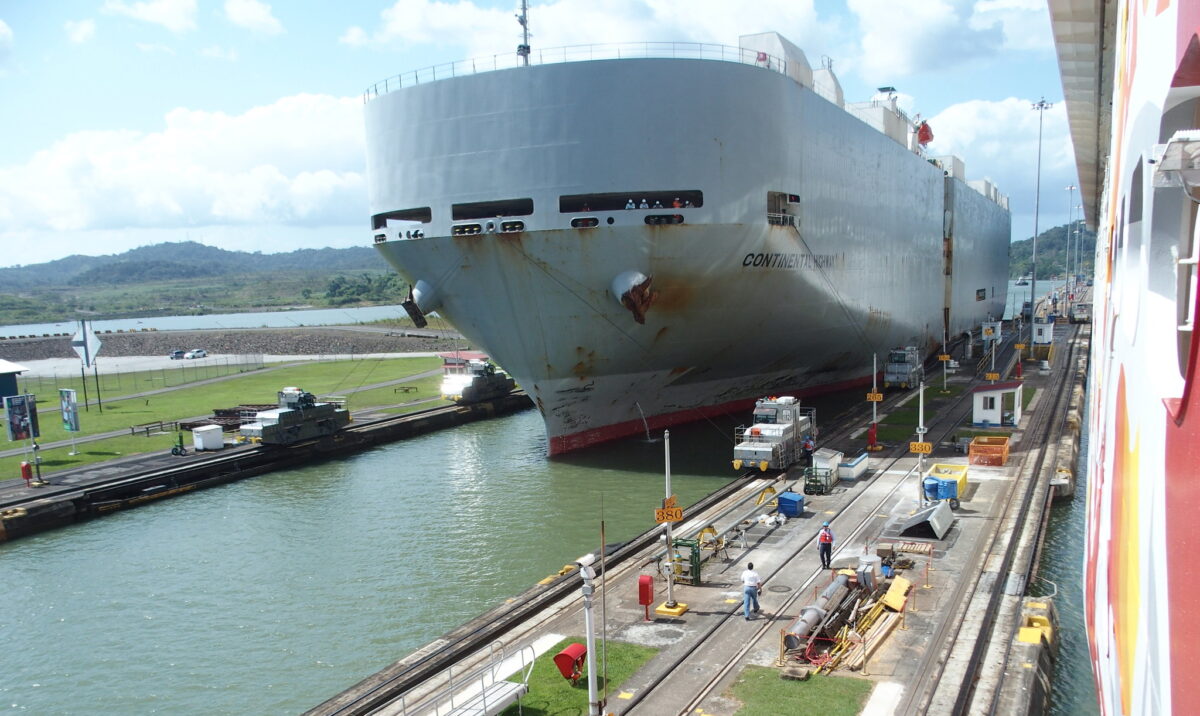Trump White House Directed Military to Draw Up Plans for ‘Reclaiming’ Panama Canal — Including Seizing It By Force: Report

Creative Commons licensed photo by Haluk Ermis via Flickr.
President Donald Trump’s rhetoric about taking back the Panama Canal isn’t just bluster, according to an NBC News report Thursday that described how the White House “has directed the U.S. military to draw up options for increasing the American troop presence in Panama” in order to be able to reclaim the canal — including the option to seize it by force.
During Trump’s speech to a joint session of Congress last week, he declared “to further enhance our national security, my administration will be reclaiming the Panama Canal,” but the White House has thus far not provided details on how that “reclaiming” would be accomplished.
It was far from the first time Trump had mentioned his desire to undo the treaty signed by President Jimmy Carter that turned over control of the canal to Panama on December 31, 1999; he has frequently accused the Panamanian government of allowing foreign interference from China regarding the canal zone’s operations. Panama Canal Authority administrator Ricaurte Vásquez Morales has denied Trump’s accusations that the canal was being influenced by the Chinese and was charging U.S. ships higher rates, calling them “unfounded” and stating there were “no exceptions” to the rules established by the neutrality treaty for the canal.
On Thursday, NBC News’ Courtney Kube, Gordon Lubold, and Carol E. Lee reported that two U.S. officials familiar with the planning efforts said that the U.S. Southern Command, at the White House’s direction, was working on several “options for increasing the American troop presence in Panama” including “developing potential plans that vary from partnering more closely with the Panamanian military to the less likely option of U.S. troops seizing the Panama Canal by force…Whether military force is used, the officials added, depends on how much the Panamanian military agrees to partner with the U.S.”
According to NBC News, several “draft strategies” have already been created and sent to Defense Secretary Pete Hegseth by Adm. Alvin Holsey, the commander of U.S. Southern Command, in anticipation of Hegseth’s planned visit to Panama in April.
The report added that the officials who were the sources for the story “cautioned that a U.S. invasion of Panama is unlikely and would only come under serious consideration if a larger American military presence in Panama does not achieve President Donald Trump’s goal of reclaiming the waterway” — but Panamanian President José Raúl Mulino has been adamant that the canal will remain under his country’s control, saying in a statement last December, ““As President, I want to express precisely that every square meter of the Panama Canal and its adjacent area belong to PANAMA and will continue to be,” adding that “[t]he sovereignty and independence of our country are not negotiable.”
Right now, the American military has more than 200 troops in Panama, a defense official told NBC News, but that number changes as troops are rotated in and out of the country. Among those stationed there are Special Forces units that have worked with the Panamanian military on combating “internal threats, insurgencies or unrest.”
The strategies presented to Hegseth include a range of actions from just maintaining the safe passage through the canal for American ships to actually returning ownership of the canal and control over its operations to the U.S., in addition to ideas for stationing the U.S. military at existing ports, building new ports, bringing in the Army Corps of Engineers to operate the canal, and reinstating the Army’s “Jungle Schools” training camps that the U.S. had in Panama before the 1999 handover.
The report also noted that the U.S. military’s plans included “potentially positioning U.S. military forces near Panama in the event of a regional war or a threat to the U.S.” with a goal “to secure the Panama Canal and eliminate China’s access to the critical waterway” if there was a war.




